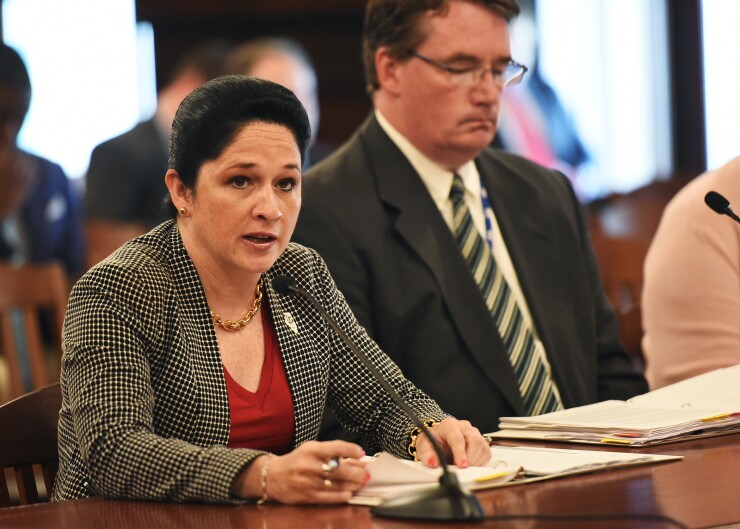Illinois saw an uptick in its fiscal fortunes in the past fiscal year, one of the few times the state’s net position has improved since that figure swung from black to red in
The net position includes tax collections and government services and measures the state’s assets relative to its total obligations. For
At negative $163.1 billion when the fiscal year ended June 30, the state’s net position improved by $18.1 billion, 10% better than fiscal 2022’s negative $181.2 billion. That represented Illinois’ best net position in six years, but it was still among the worst of all states relative to the size of Illinois’ expenses.
“Illinois was rewarded by ratings and the market this year [after] improving its balance sheet to restore its liquidity as well as incrementally reduce its overall long-term liabilities,” said Richard Ciccarone, president emeritus of Merritt Research Services. “Keeping the course will become more difficult as the state must rely more on its own revenues to cut the massive pension burden that remains.”
Illinois’ state bond ratings, which had been at BBB-minus level, are now all single-A after a
From June 2022 to June 2023, Illinois’ assets increased by $4.7 billion and its liabilities decreased by $26.1 billion. The state’s other post-employment benefits (OPEB) liability shrunk from $46.6 billion to $20.4 billion, a $26.2 billion decrease.
At the same time, net pension liabilities rose to $145.6 billion. That represents a 4% increase over the previous fiscal year.
The Governor’s Office of Management and Budget points out that over the past fiscal year, Illinois contributed to pensions beyond the amounts required by statute, and an additional $1 billion authorization for bond funding toward pension buyouts extended the buyout program until 2026. An
“It’s hard to get too excited about the advance pension contributions when net pension liabilities still went up by 4%,” said Ciccarone. “Although the increase in pension payments was a step in the right direction, the increased contribution to lowering overall long-term retirement liabilities had a relatively small impact… An intense effort will be needed to really make a difference going forward.”
Still, Ciccarone said the state “deserves a merit badge” for its success in shrinking the OPEB liability, a win that the October GOMB presentation credits to “proactive cost management” of the state’s health insurance programs.
The market might like to see the state pay down its pension obligations with surplus monies, Ciccarone observed, but surprises like the arrival of more than 25,300 migrants in Illinois courtesy of Texas could get in the way of that.
The numbers in the interim report could also change by the time the final audits are done. The comptroller used financial information that state agencies have already reported to its office to prepare the interim report. The auditor general prepares the final annual report from audited reports by state agency management.
While the Government Accounting Standards Board recommends states release their reports by 180 days after the end of the previous fiscal year on June 30, Illinois’ official report has in the past arrived as late as
The auditor general’s office referred questions about its timeline to the comptroller. According to the comptroller’s office, the auditor general is responsible for getting the final yearly report to the comptroller, who then publishes it.
“The audit process for certain state agencies can lead to a delay in publication if the Auditor General is not able to complete the individual agency audits,” the interim report notes.
The state has set an official deadline of Dec. 31 for the final report.
“That objective remains elusive, but it is the right thing to do when it comes to building more trust with bond investors,” Ciccarone said. “There is no substitute for timely audited reports because they validate the numbers, and they provide a more detailed description of assumptions and what’s behind the numbers.”
